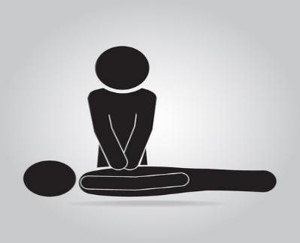
Marilyn Simpson, MSN/Ed, RN
Health Promotion Disease Prevention Case Manager, CBOC
VA North Texas HCS, Abilene, Texas
NOVA Chapter 384

Scenario: You are leaving the canteen with your refilled drink and the unthinkable happens. Through the glass door of the giftshop you see someone lying lifeless on the floor. For a split second you are paralyzed with the reality that she is now your responsibility since you are the trained professional. You hope that she may have only fainted and did not die. You look right, then left, but see no one. Tag you’re it! Somewhere in your brain you have the training and know what to do, but all that practice does not come to you as quickly as your instructors said it would. What now?
Here is a little rhyme to help you get started. TAP HIM – CALL THEM. Now, read the rhyme out loud.
Compose yourself in that same split second, approach the lady and start the Basic Life Support (BLS) assessment which is coming back to you.
Tap her firmly on the shoulders ~ you get no response. Now yell! “Help!” Raise enough commotion that someone comes to you. This is no time for your elevator voice. The clock is ticking, and you do not know how long she has been down. According to the American Heart Association (AHA), for the best outcome the first AED shock must be given within the first three minutes.
Someone noticed your situation and ran for the AED/911. Now what? Tick, tick, tick.
High quality compressions are the key to the best outcomes per the AHA. Every time compressions are interrupted, the heart stops; the first few compressions are not as effective as later compressions. The more often the compressions are interrupted, the lower the victim’s chance of survival. Compressions that are too deep are better than too shallow. You will break ribs – from which she can recover.
Long ago the AHA taught ABC – Airway – Breathing - Compressions. That has changed with the latest directions being CBA, compressions first, (then when help arrives) work on breathing and airway.
You have help on its way, now finish your initial BLS assessment. Check for a pulse at least 5 seconds, but no longer than 10 seconds. Quickly move her outer jacket so you can count respirations during those same seconds.
As you palpate for heart beat in her carotid artery down her neck, turn your head to watch her chest. Tick, tick, tick. No pulse, no breaths? Start compressions immediately. Stay on the chest until help arrives ~ you can do this.
Reference: AHA Instructor Network Home - American Heart Association
